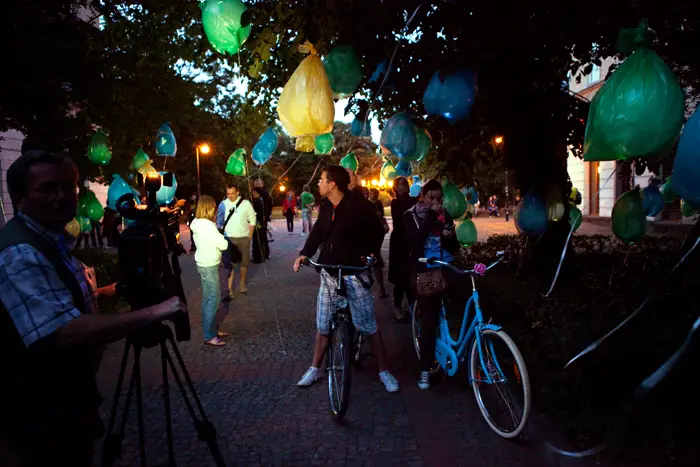It’s pretty safe to say that many of today’s younger urban planners have a soft spot for the SimCity franchise. I wrote fondly of my time spent playing the game as a kid when the latest version of the game, SimCity 5, was released nearly two years ago. So too did fellow This Big City contributor Theodore Brown, whose inspired take on the new game I credit with introducing me to Jay Forrester’s urban planning classic Urban Dynamics, and throws in a few well-deserved jabs at the video game industry just for fun.
So it comes as something of a shock to me to admit that, during the nearly two years that have passed since the game’s release, I have yet to find the time to sit down and play SimCity 5. It’s not that I don’t want to, or even that I don’t think it would be a valuable experience. But it’s a massive time commitment, and one that doesn’t fit in well with trying to finish a master’s degree, working as a translator, and slowly but surely (okay, more slowly than surely) building a career as a freelance urban planning writer. I’ve resolved to file SimCity 5 on my ever-expanding list of things to do once I have my degree.
It looks like there will be plenty of new features for me to try once I do. I was pleased to find out that SimCity’s producers finally gave up on their mandatory multiplayer mode. But it seems there’s another element in the latest version version of the game that was completely absent in earlier ones: homelessness.
The addition of homelessness as an issue city leaders have to deal with comes at an oddly appropriate moment – it’s increasingly becoming an issue for many cities in the real world, as they are riled by housing crises and mounting inequality. And sadly, both the in-game responses and the real world responses by cities to homelessness has not exactly been pretty.
The issue of homelessness in SimCity was recently taken on by an article at Vice News’s tech blog, Motherboard. The article focuses on Matteo Bittanti, a professor at Milan’s IULM University, who became increasingly interested in homelessness in the game. “I started to find the discussion about homeless in SimCity way more interesting than SimCity itself because people were talking about the issue in a very—how can I say, not racist, not classist, but definitely peculiar way,” he tells Motherboard.
Bittani was so interested in it that he began compiling quotes from SimCity users intent on dealing with the virtual homeless, ultimately publishing them in a 600 page, two volume mega-book called “How to get rid of the homeless”. The complete set lists on Amazon for $220 – a remarkably high price, which would seem counterproductive if his goal is in fact to reduce homelessness. The quotes in the book show the same level of empathy we’ve come to expect from the online gaming community, the same fine folks who gave us the sexist “Gamergate” scandal. Which is to say, almost none. Here’s one gem taken from the book:
“How do you get rid of these people? They gather in the parks and then people don’t go to the parks… I mean as you level up your residential to medium I think it’s almost impossible for some people to not become homeless. I read that busses [sic] are supposed to take them out of the city but it doesn’t seem to be working. Maybe cuz of the server issues homeless aren’t leaving I think? If anyone has gotten rid of em plz let me know what you did.”
The article also points to a number of questionable strategies users have tried: “waiting for natural disasters like tornadoes to blow the vagrants away, bulldozing parks where they congregate, or creating such a woefully insufficient city infrastructure that the homeless would leave on their own.”
These quotes would be unsettling enough on their own, but they seem to be eerily close to some of the strategies real world cities have used to “get rid” of the homeless. In London, store owners and apartment complexes have installed “anti-homeless spikes” to keep indigents from setting up camp out front. The same tactic has been used in San Francisco in front of a Lamborghini dealership. In Los Angeles, a developer sought to build a bridge between two of his complexes downtown to protect residents from (in his words) “potential incidents that could occur during the evening hours when the homeless population is more active in the surrounding area” (in a bit of karmic though clearly illegal retribution, that building was later torched by an arsonist. And who can forget the infamous “poor door” in New York?
This is perhaps one of the saddest cases ever of art imitating life. Or maybe it’s life imitating art, since those responsible for the urban design of major cities seem to have taken the same uncritical logic of the gamers (as the Motherboard piece puts it, that the presence of the homeless “makes SimCity residents unhappy, and reduces land value”) and applied it to real life. As if running a city were some kind of game where whichever city had the least homeless people wins.
Homelessness is a difficult issue to solve. It is unfortunate but true that the effects homeless people have on others can be negative. But to simply aim to “get rid” of them, to make them someone else’s problem, only makes the issue worse – not to mention the fact that it robs the homeless themselves of their human dignity and in some cases their rights as well. Here’s an idea: why not, instead of trying to level homeless people with natural disasters or push them out with homeless spikes, why not try to find them a home?
Thankfully, some SimCity 5 players seem to get this. One commenter proposes reducing homeless numbers by “creat[ing] jobs, either through zoning or upgrading road density near industry.” And of course, there are plenty of examples in real life of urban programs designed to get people back on their feet as well.
San Francisco, despite its Lamborghini spikes and nasty reputation for unaffordable housing, recently rolled out a program that provides bathrooms for the homeless to use. And elsewhere in the US, the “tiny house” movement seeks to provide cheap and effective shelter to people with nowhere to live.
What is the ultimate effect of including homeless people in SimCity 5? Bittanti’s final take is that it will be negative. “Issues like homelessness require an approach that is beyond algorithms,” he says. “It’s beyond technological reasons. It requires psychology, anthropology, philosophy.”
I’m not so sure. While he’s certainly right that psychology, philosophy, and other academic disciplines may have to be brought in to solve real life homelessness, that doesn’t mean that including homeless in a SimCity game can’t serve some purpose. In fact, it may be doing something very useful: making people who would otherwise ignore this issue pay attention to it. Of course, after paying attention to it, they could choose to go the route of anti-homeless spikes and poor doors. But then again, they might become motivated to make a real difference in lowering homelessness levels.
In SimCity, as in life, we can only hope that they make the right choice.


